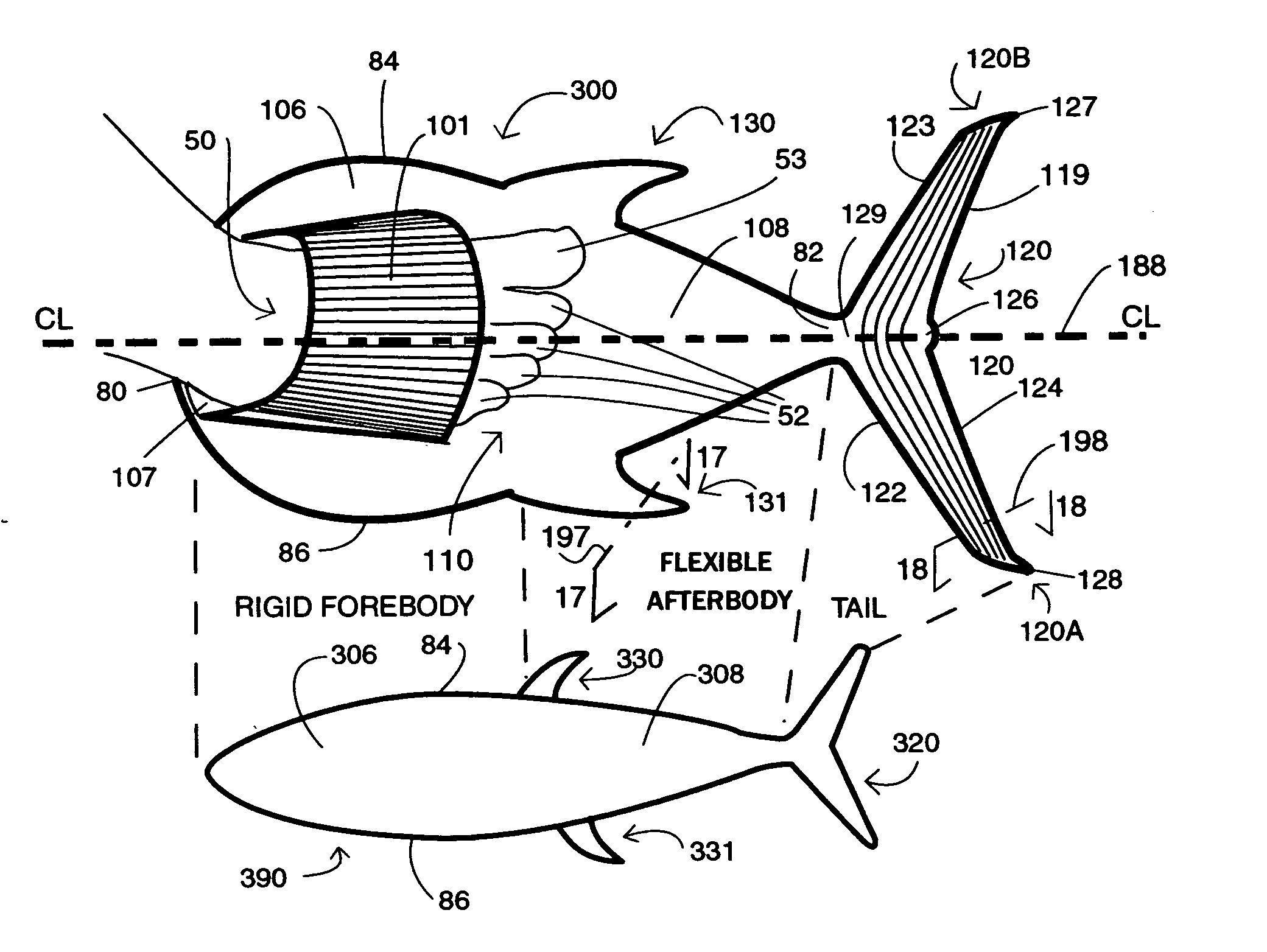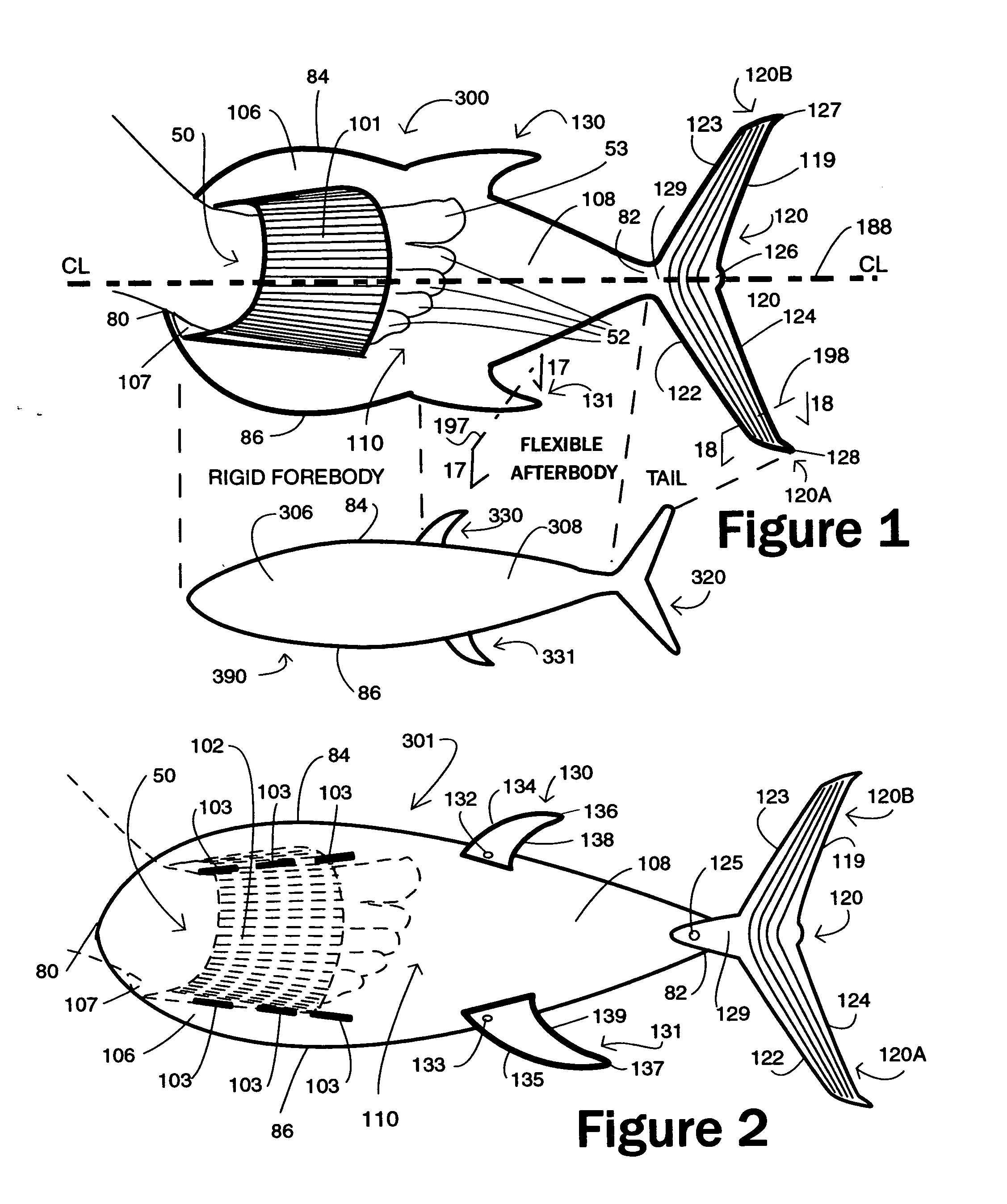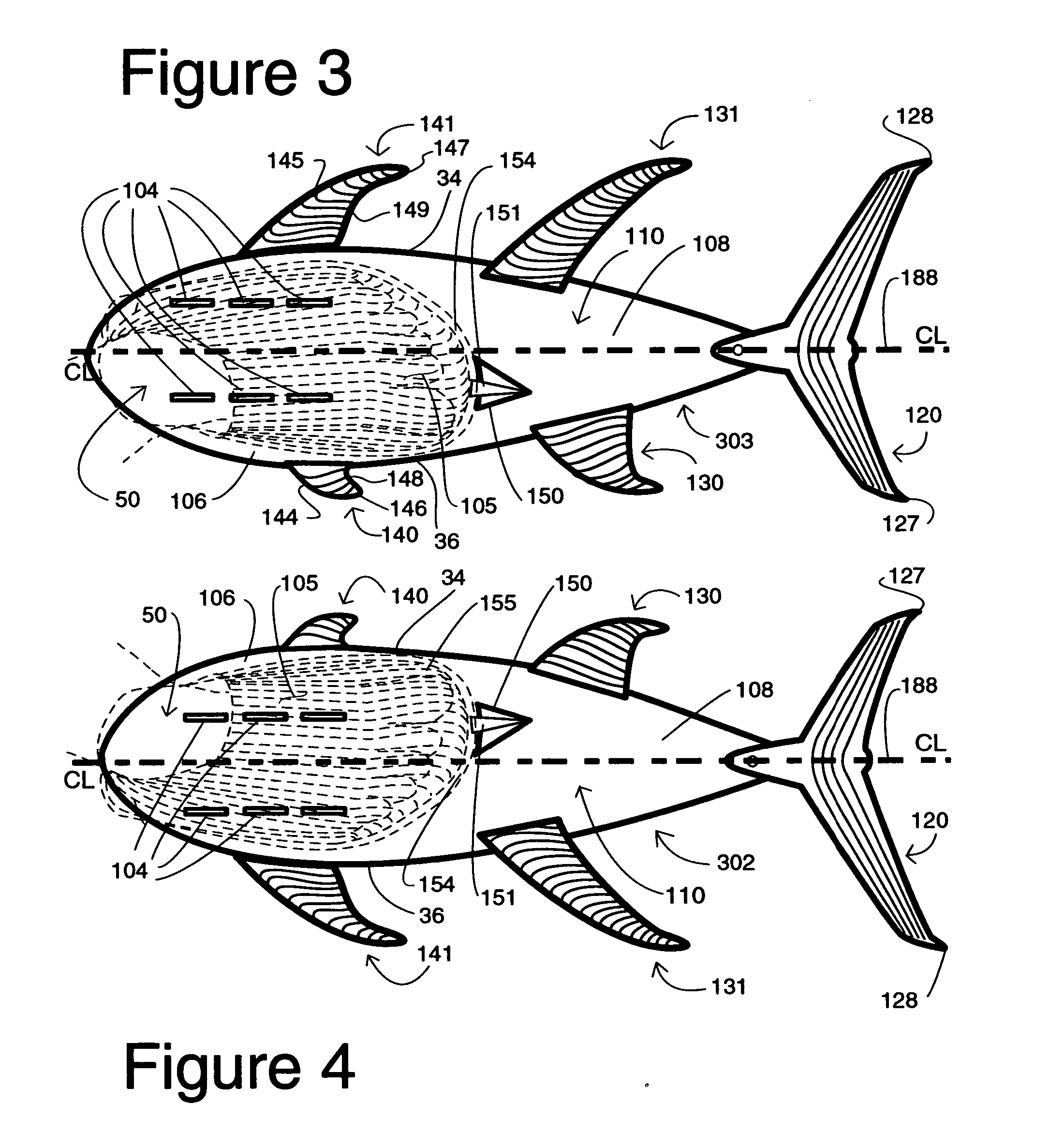Multiple-serial-hydrofoil swim fins statement regarding federally sponsored R&D
a technology of swim fins and hydrofoil, applied in the field of swim fins, can solve the problems of difficulty in following the logic of the claim of “fish” based propulsion, increase the work necessary to move the swim fin, and extra length increase the overall length of the swim fin, so as to reduce the outward directed vortice, high propulsion and low drag.
- Summary
- Abstract
- Description
- Claims
- Application Information
AI Technical Summary
Benefits of technology
Problems solved by technology
Method used
Image
Examples
Embodiment Construction
)
[0155] Selected shapes enhance the effectiveness of foot fins because certain shapes, most notably airfoil shapes, and cause the fluid (water) to flow more quickly over one surface than it flows over the opposite surface producing a negative pressure hereafter referred to as “lift”. (Ref. Bernoulli effect). This negative pressure causes the swim fin to move in that direction. Airplane wings (airfoil shapes) offer an example of a most efficient way of moving through water and light fluids such as air using “lift”. The great advantage of using lift occurs when the lifting forces passively work by simply holding an airfoil in a moving stream of water at the proper angle of attack (pitch) with the negative pressures creating propulsive force vectors.
[0156]FIG. 18 is a cross-section view of the hydrofoil portion of the tail fin 120 which the dashed line 198 in FIG. 1 acts as the section line and describes some of the known aspects of this airfoil. The cross-section of the tail fin 120 ...
PUM
 Login to View More
Login to View More Abstract
Description
Claims
Application Information
 Login to View More
Login to View More - R&D
- Intellectual Property
- Life Sciences
- Materials
- Tech Scout
- Unparalleled Data Quality
- Higher Quality Content
- 60% Fewer Hallucinations
Browse by: Latest US Patents, China's latest patents, Technical Efficacy Thesaurus, Application Domain, Technology Topic, Popular Technical Reports.
© 2025 PatSnap. All rights reserved.Legal|Privacy policy|Modern Slavery Act Transparency Statement|Sitemap|About US| Contact US: help@patsnap.com



